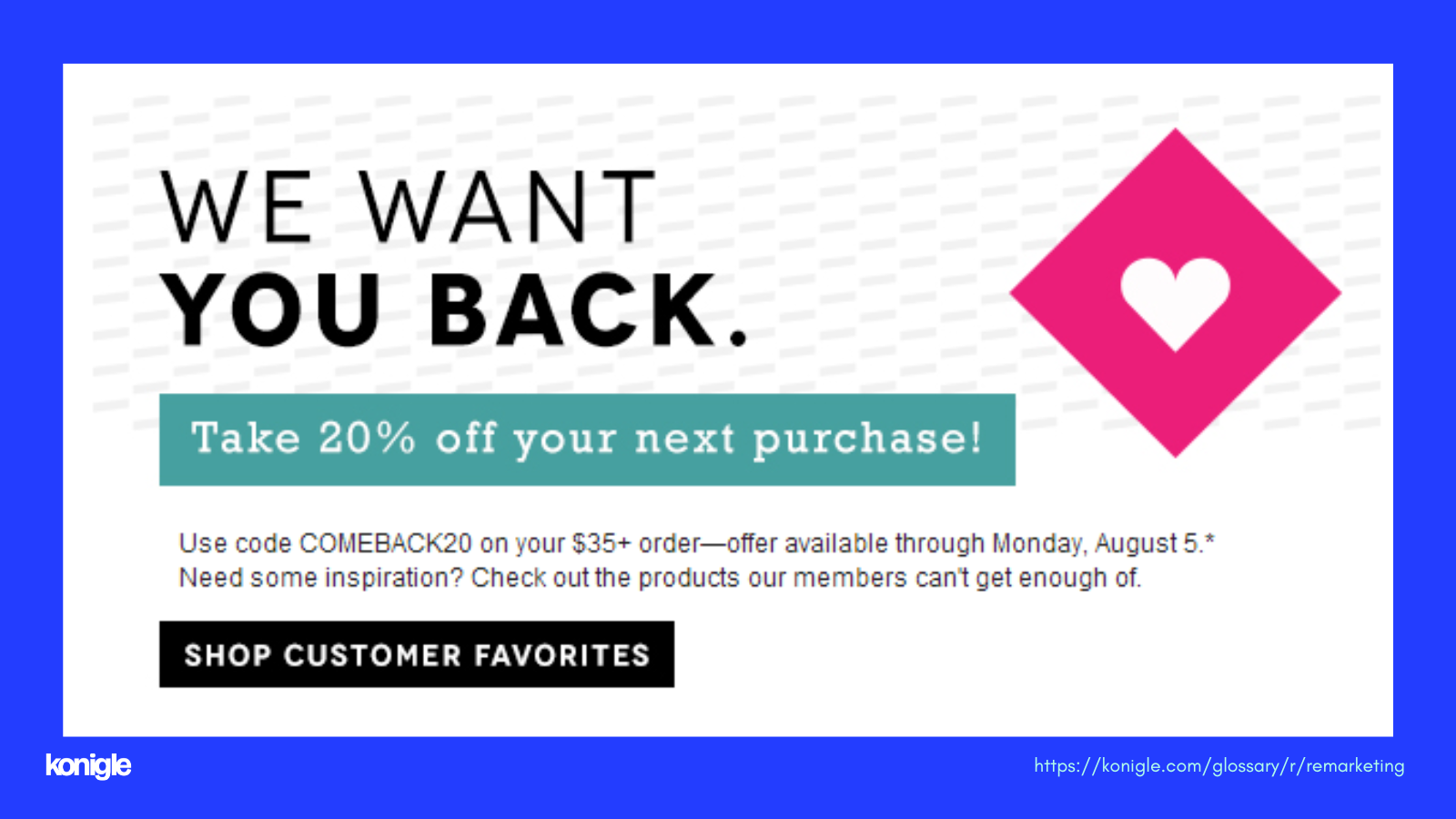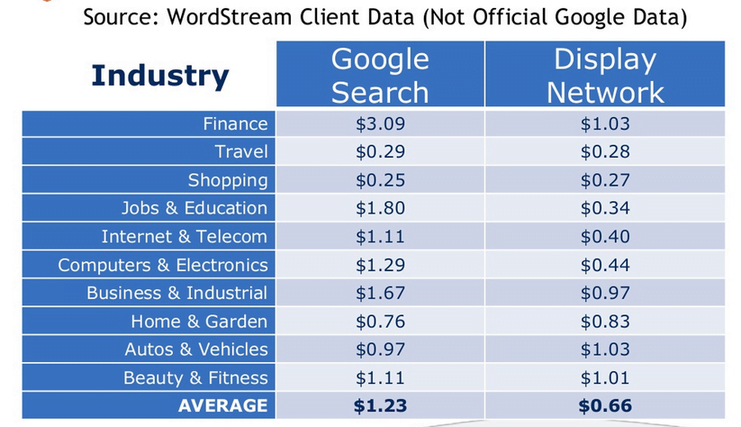Remarketing
Remarketing is a technique used for reaching your previous buyers. This is all conducted through email marketing and is a cost-effective way to make sales.
Remarketing is a technique to encourage users who have already interacted with your business to take action.
Remarketing and retargeting are similar in appearance, but there is a huge difference between them, which is very important to understand. Many people misunderstand remarketing and retargeting as the same, which creates confusion.
Remarketing is actually used to engage customers through email. The purpose of remarketing is not to drive the customer toward a direct purchase. In fact, if seen in the traditional way, remarketing is used to upsell a service renewal, product, or accessory.
But in this new digital era, remarketing works in a modern way. Therefore, many sellers use remarketing as an online sales technique, similar to retargeting.
And it becomes more effective.
It also serves to remind users about their purchase history using information. Most of the remarketing happens in email marketing but sometimes paid advertising is used to target the user.
What is an example of remarketing?
It's all about staying connected with these users. We make sure to show them emails or ads that are relevant to their interests, whether they're browsing other websites or using social media platforms. We do this by using cookies or tracking pixels, which help advertisers identify and reach the right audiences.
An excellent example of remarketing is when a user visits an online store and adds items to their shopping cart but doesn't complete the purchase. In this case, the online store can utilize remarketing techniques to display friendly and personalized ads or send emails (if already provided on the platform) to that user, gently reminding them of the items they left behind and encouraging them to complete the purchase. These ads can be showcased on a wide range of websites or social media platforms that the user visits, significantly enhancing the likelihood of conversion and driving additional sales for the online store.
It’s a fantastic strategy that can really help businesses stay top-of-mind for potential customers who have shown interest in their products or services. By strategically placing relevant ads or emails in front of these individuals, businesses can actually boost brand awareness and engagement, and ultimately upsell them.
Why is remarketing used?
Remarketing is an important concept of digital marketing, with the help of this trust is created among the customers about the brand, which is very important from the business point of view.
Launching a new product or business process takes time to reach the customer, build trust with it, and sell it back to the same customer.
Most users like to take things from a particular brand, it is challenging to sell a new brand or product to the customer in time, that is why it is important to remarket so that the customer remains to trust the new product of the same brand.
How Remarketing Works?
One of the great things about how remarketing works is that you have the ability to create custom audiences based on specific criteria.
For example, businesses can create an audience of users who have visited their website but did not make a purchase or who have already purchased something but need to upsell it.
This gives you the opportunity to create personalized emails, ads, and promotions, designed to entice these users to come back and complete their purchase. It's a fantastic way to boost your sales and connect with potential customers!
Remarketing also gives businesses the opportunity to divide their audience into different stages of the buyer's journey.
This enables businesses to develop distinct remarketing campaigns for users who are still in the awareness stage, users who have added items to their cart but haven't completed their purchase, and users who have already made a purchase.
By tailoring relevant and personalized messages to each segment, businesses can enhance their likelihood of converting these users into loyal customers.
In addition to boosting brand visibility and conversion rates, remarketing can also assist businesses in cultivating stronger relationships with their audience.
By consistently staying in front of potential customers, businesses can establish trust and credibility, making it more probable for users to select their products or services over competitors.
Benefits of remarketing
1. Reach Targeted Audiences:
With the help of a remarketing strategy, you get an idea about your targeted audience (e.g., which one likes shoes, who likes t-shirts most, or who wants to renew services) to reach with perfect upsell content for them. It will build customer trust around you.
Also, Konigle's Abandoned Cart Recovery helps you with human agents to engage shoppers who have abandoned carts in your store by chatting with them over SMS.
2. Increase Conversion Rates:
If you engage with the audience automatically high conversion rate will increase day by day. Remarketing helps you to easily convert the same user who already purchases the same product or service.
3. Drives higher ROI:
If your customers have already shown interest in a particular product or service then remarketing helps you to concentrate your promotional efforts toward customers and translates into more ROI (return on investment).
When should I use remarketing?
When is the best time to use a remarketing strategy? Remarketing can be a powerful tool in several scenarios to boost your marketing efforts and connect with your target audience in a more effective way. Below are some situations where remarketing can bring you benefits:
1. After a visitor leaves your website:
By utilizing remarketing, you have the opportunity to keep showing engaging ads to visitors who have already expressed interest in your products or services. This can be instrumental in reinforcing your brand and enticing them to revisit your website.
2. Abandoned shopping carts:
If a potential customer adds items to their shopping cart but doesn't complete the purchase, remarketing can be used to kindly remind them of the products they were interested in and encourage them to finalize their transaction.
3. Cross-selling and upselling:
Remarketing gives you the opportunity to show customers who have already made a purchase some complementary or upgraded products. This can be a great way to boost the average order value and encourage them to make repeat purchases.
4. Re-engaging inactive customers:
If you have a list of customers who haven't made a purchase in a while, remarketing can help you reconnect with them in a friendly way. By showing targeted ads or offering special promotions, you can remind them of your brand and encourage them to make a purchase again, all while maintaining a positive and engaging relationship with them.
How Much Does Google Remarketing Cost?
When it comes to the cost of Google Remarketing, there are a few things you should keep in mind. The pricing structure for Google Remarketing campaigns usually follows a cost-per-thousand-impressions (CPM) model. This means that advertisers are charged for every thousand times their ad is displayed to users.
The cost of Google Remarketing can actually vary based on a few factors like the industry you're in, your target audience, where your ads are placed, and the level of competition. In general, if your industry is highly competitive and you have a broad target audience, the cost of remarketing ads tends to be higher.



